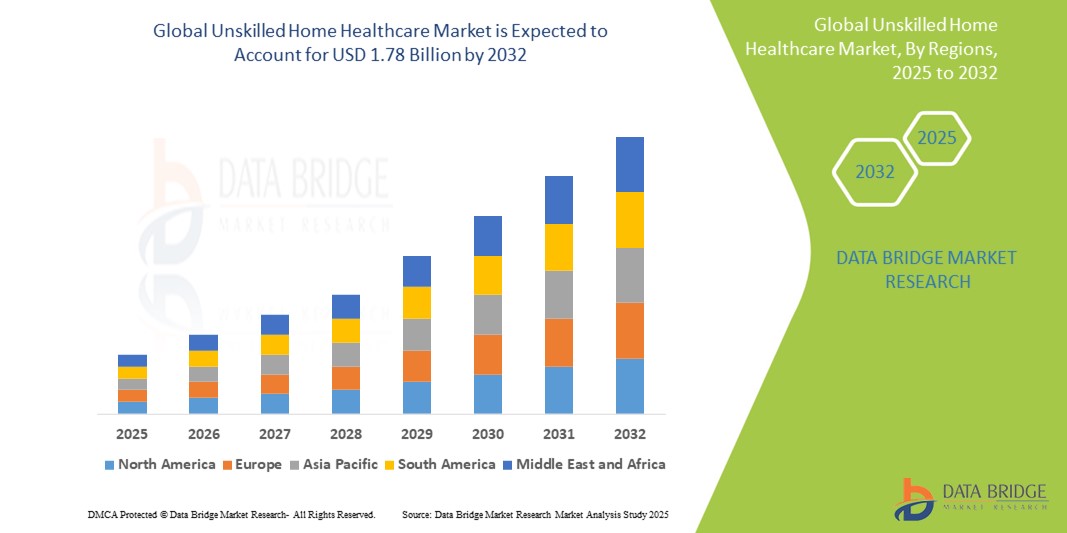The Unskilled Home Healthcare Market is experiencing notable growth as aging populations, rising chronic disease prevalence, and cost-effective care models drive demand for non-medical home assistance. Unlike skilled nursing care, which requires licensed professionals, unskilled home healthcare involves assistance with daily living activities such as bathing, dressing, meal preparation, companionship, and basic mobility. This market is vital for seniors, disabled individuals, and patients recovering from illness who wish to maintain independence while receiving care in the comfort of their homes.
Market Overview
Unskilled home healthcare represents a major segment within the broader home healthcare services industry. It includes a wide array of services that are typically provided by certified nursing assistants (CNAs), home health aides (HHAs), or personal care aides (PCAs). These services do not require medical training but are crucial for maintaining a patient’s quality of life.
The market was valued at several billion USD in recent years and is projected to grow at a CAGR of 6% to 8% over the next decade. North America currently dominates due to robust insurance systems, while Asia-Pacific is emerging quickly with its large elderly population base.
Key Market Drivers
- Aging Population: Globally, the number of people aged 65 and older is increasing rapidly. This demographic shift creates demand for long-term care services, including unskilled home care, as many seniors prefer aging in place.
- Cost-Effectiveness: Unskilled home care services are significantly more affordable than hospital stays or skilled nursing facilities. This makes them an attractive option for families and healthcare systems aiming to reduce costs.
- Chronic Disease Management: As conditions like diabetes, arthritis, and Alzheimer’s disease become more prevalent, patients often require daily assistance with routine tasks rather than medical interventions.
- Government Support & Reimbursement Models: In countries like the U.S., Medicaid and state-funded programs often cover unskilled home healthcare services, providing a financial backbone to support market expansion.
- Technological Advancements: Innovations like remote patient monitoring, mobile health applications, and digital caregiver coordination tools improve service delivery and family engagement, increasing the efficiency of unskilled care.
Market Challenges
Despite its growth, the market faces several challenges:
- Workforce Shortage: High turnover rates and low wages for home aides pose difficulties in maintaining a skilled and stable workforce.
- Regulatory Variability: Licensing requirements and care standards vary widely by region, impacting service consistency and scalability.
- Quality Assurance: Because services are provided in private homes and often unsupervised, maintaining quality and safety standards is a critical concern.
- Informal Care Competition: Many individuals receive unskilled care from family members, reducing market penetration for formal home care agencies.
Segmentation Insights
- By Service Type: Personal care services, homemaking services, and companionship care are among the most demanded.
- By End User: The elderly population remains the largest consumer group, followed by disabled adults and post-operative patients.
- By Delivery Channel: Agency-based care dominates, though independent caregivers and tech-enabled platforms are growing fast.
Regional Insights
- North America: Strong regulatory frameworks, government reimbursements, and high consumer awareness have made North America the leading region in this market.
- Europe: Countries like Germany and the UK are integrating unskilled home care into public healthcare strategies to manage healthcare system burdens.
- Asia-Pacific: Japan and China are seeing rising demand due to aging populations and expanding middle-class awareness of eldercare options.
- Latin America and Africa: While still developing, increasing urbanization and healthcare investments offer future market potential.
Competitive Landscape
The market is fragmented with numerous local and regional players, though consolidation is increasing as larger home care companies acquire smaller ones. Key players include:
- Brookdale Senior Living
- Honor Technology
- Comfort Keepers
- Home Instead
- Visiting Angels
Technology startups offering caregiver marketplaces or scheduling software are also beginning to influence the space significantly.
Future Outlook
The future of the unskilled home healthcare market looks promising as the world shifts toward patient-centered care and home-based solutions. Integrating digital health tools, ensuring better training and compensation for caregivers, and establishing national quality standards will be crucial to ensure sustainable growth and improved care outcomes.
Get More Details:
https://www.databridgemarketresearch.com/reports/global-unskilled-home-healthcare-market
Conclusion
The Unskilled Home Healthcare Market plays an increasingly vital role in supporting the global shift toward home-based care. As healthcare systems look to reduce costs and improve patient satisfaction, unskilled caregivers will become even more integral to the care continuum. Addressing workforce challenges, leveraging technology, and refining care models will be essential to unlocking the full potential of this growing market.



